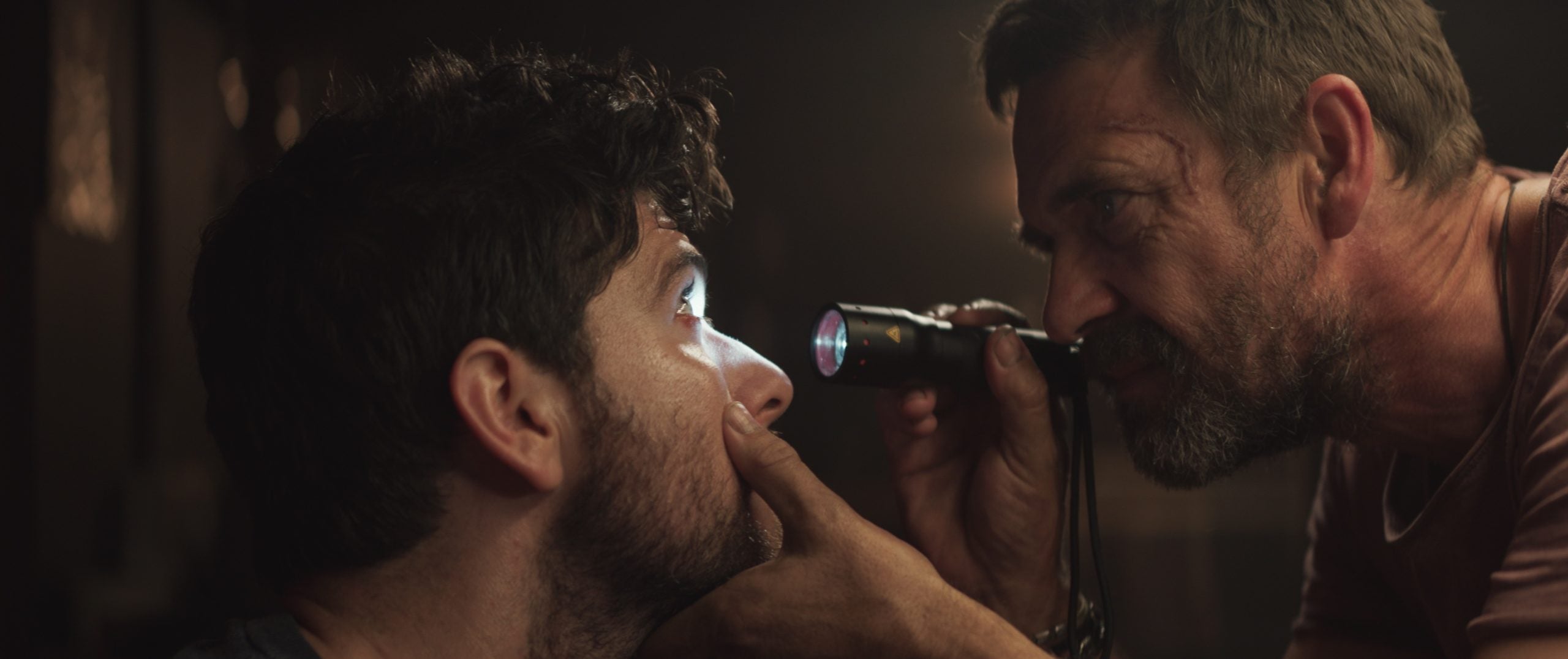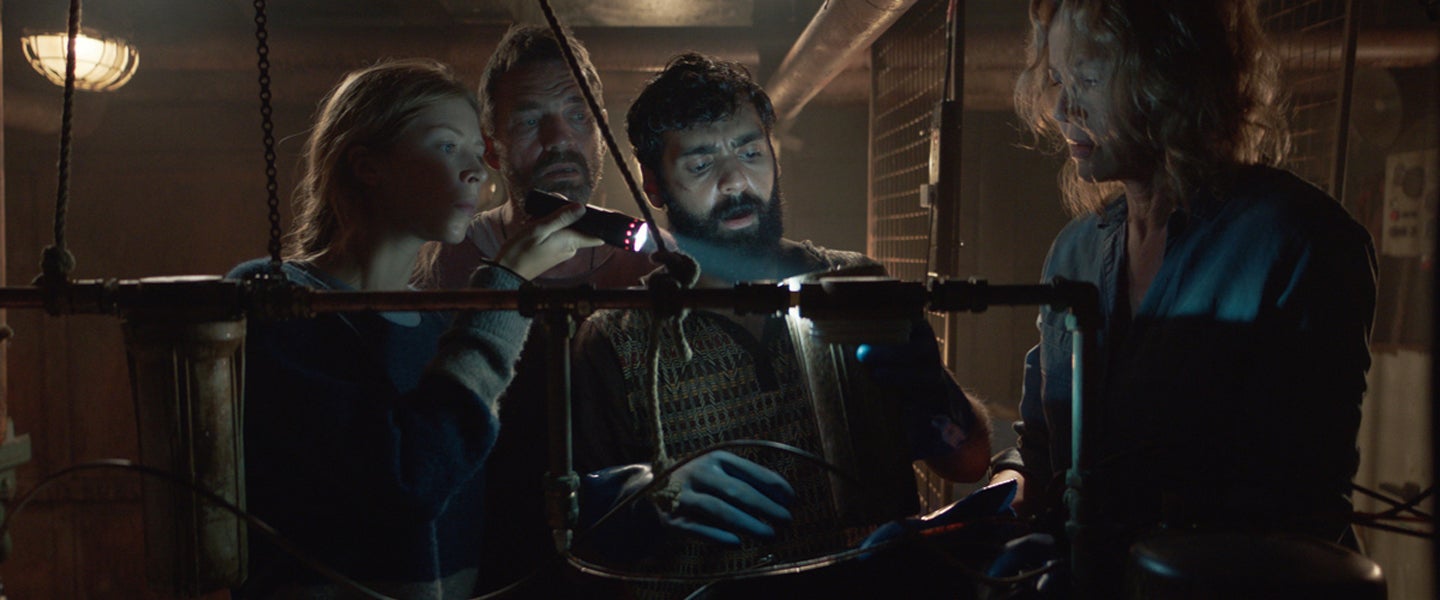One of the trickiest things about being a film critic is separating the movie you’re watching from the world inside you. If, god forbid, my dad had recently died, and I was checking out a tearjerker about a father and son, there’s a good chance I’d find it incredibly emotional. But is that because I’m in a heightened headspace at that moment, or is it the film that’s moving me? Similarly, if I’m really missing my wife, and I’m watching a romantic drama, I know that my loving feelings for her can commingle with the story I’m watching. Is the movie doing the work, or am I?
Those thoughts swam through my head a lot during the new nautical thriller Sea Fever, which premiered at the Toronto Film Festival in September of last year. Making her feature debut, Irish writer-director Neasa Hardiman has crafted a tense story about a lone fishing trawler somewhere in the Atlantic that encounters a deadly creature. With nods to Alien and John Carpenter’s The Thing, this low-budget monster movie was in no way meant to be a commentary on our current coronavirus reality. But through strange timing, Sea Fever (which is available on digital starting today) now suddenly feels crushingly prescient and unsettling. That quirk of coincidence adds to the movie’s resonance, but I’m not sure how much credit we should give it.
As the movie begins, a socially awkward but brilliant marine biology student named Siobhán (Hermione Corfield) is doing what she loves most: avoiding people and burying her head in her work. Siobhán is unapologetically not a people person, but as is often the case in B-movie thrillers, her dominant character trait will immediately be at odds with the movie’s plot. She is assigned to work on a trawler for a week, in which she will study the mathematical patterns of fish and other ocean-dwelling creatures, while trying not to alienate the unintellectual, brawny crew, including the crusty married couple Freya (Connie Nielsen) and Gerard (Dougray Scott) who run the ship.
Siobhán’s feeble efforts to ingratiate herself fail almost immediately — she’s a redhead, which is considered bad luck — but her nerdy, aloof personality soon becomes the least of the crew’s problems. Out in the middle of nowhere, the boat is suddenly seized by… well, what exactly? It’s too big to be barnacles, and when Siobhán goes underwater to check, she sees fluorescent tendrils that seem to be attached to some massive, unidentifiable, scary-looking squid thingy. The trawler can’t move and, worse, one of the crew members who cut his hand open seems to have gotten an infection from the goo this beast’s tendrils produce. When the crew member dies, it becomes clear that he had thousands of parasites inside of him — and now those parasites have gotten into the boat’s water supply.
Long before someone proclaims, “We need to quarantine ourselves,” it’s fairly obvious that Sea Fever is, accidentally, one hell of a timely horror film. Granted, the terror comes from an aquatic parasite, not a super-contagious virus, but the slow build of panic and confusion may strike a chord for many viewers. (Also adding to the freaky sense of déjà vu: Siobhán discovers that she and the other crew members may not know that they’re infected until about 36 hours after exposure to the parasite.) And, ultimately, the characters may have to decide if they’ll sacrifice themselves rather than returning to land and risk spreading the infection. These people knew about flattening the curve long before the rest of us.

During traumatic times, some people want entertainment that helps them get their mind off what’s distressing them. Sea Fever is very much not for that audience — instead, it may prove perversely comforting for viewers suddenly drawn to pandemic fiction as a way to wrestle with our current situation. A genre movie such as Sea Fever, precisely because it’s blissfully unaware of the COVID-19 nightmare that’s coming, provides enough safe distance from reality that we can reappraise what’s going on from a new perspective. The characters’ problems aren’t exactly ours, but it’s close enough to send a few shivers down our spine while we assure ourselves that it’s just a movie.
Far from being cheap exploitation, Hardiman’s chiller is a thoughtful, claustrophobic chamber piece. Don’t expect gnarly beasts popping out of people’s stomachs or gory kill scenes. Instead, Sea Fever is all about the queasy uncertainty of what’s going on inside the characters’ bodies. Are they infected? And if so, how quickly will the infection take hold? There aren’t a lot of special effects in Sea Fever, and so much of the terror comes from the fact that Siobhán and the crew are trapped on this boat, unable to radio for help, and quickly running out of options. For anybody cooped up in their apartment during quarantine, this movie’s sense of being closed-in might be triggering.
But the movie’s scares aren’t just of the body-horror variety. While everyone else is freaked out and wants to get to a hospital as soon as possible before anyone else dies, Siobhán is coldly pragmatic. She insists that they can’t endanger humanity by rushing back home — they have to think of the greater good. That puts her in conflict with the rest of the crew, setting in motion an ethical quandary that, weirdly, has been playing out in similar forms in the news. Debates around the importance of social distancing — and when it might be right to reopen public life — are, at their heart, a tug-of-war between self-interest and the need to be a responsible global citizen. However, those philosophical musings are a far more pressing matter for Sea Fever’s characters, whose lives very much hang in the balance. Whether it’s on a fictional boat or during a real-life pandemic, the question of how best to behave can be thorny.

But as much as Sea Fever brushes up against current events, I’m not sure what it has to say, either in the abstract or for our COVID-19 era, is especially interesting. And as a horror-thriller, it’s a pretty familiar riff on classics that have come before it. The movie has a stripped-down purity that’s refreshing, but that also keeps the story from being all that surprising. I don’t doubt that, for some viewers, Sea Fever will be an outlet to work through their own anxiety and cabin fever. But despite how spookily “timely” this movie is, unwittingly speaking to shared fears we’re all experiencing, its humdrum execution becomes all the more conspicuous as a result.
Neasa Hardiman and her cast were never intending to make the first horror movie of the coronavirus age. Unfortunately, Sea Fever’s unexpected prescience ends up being the best thing about it.

